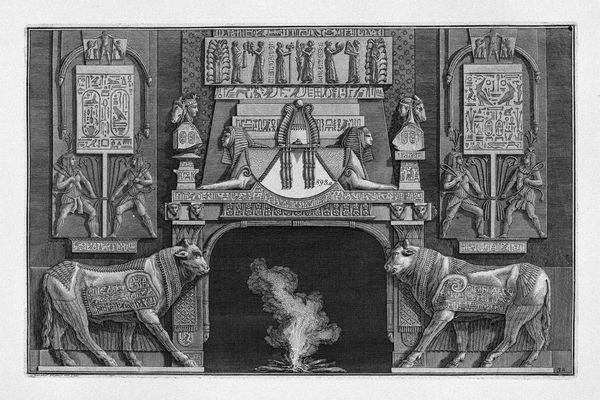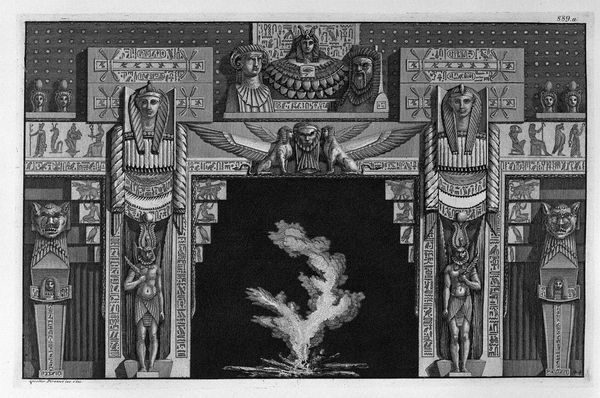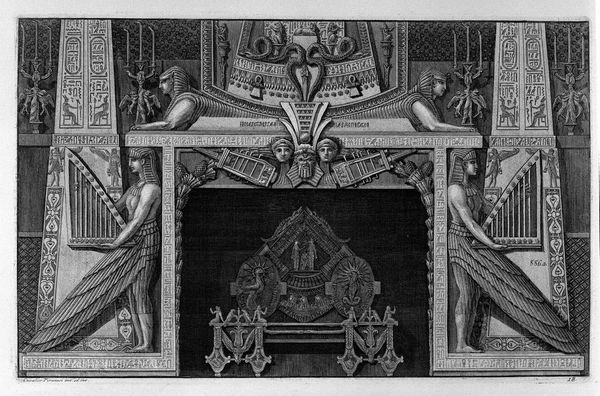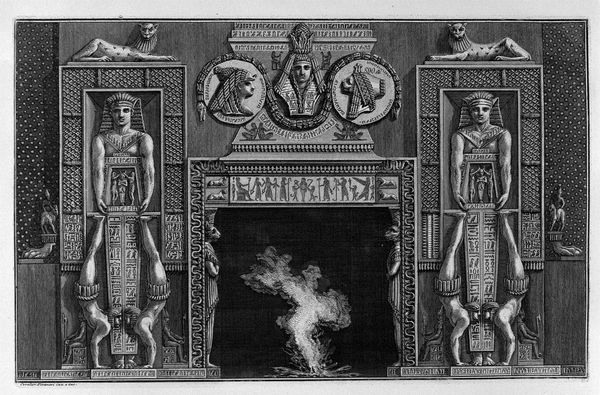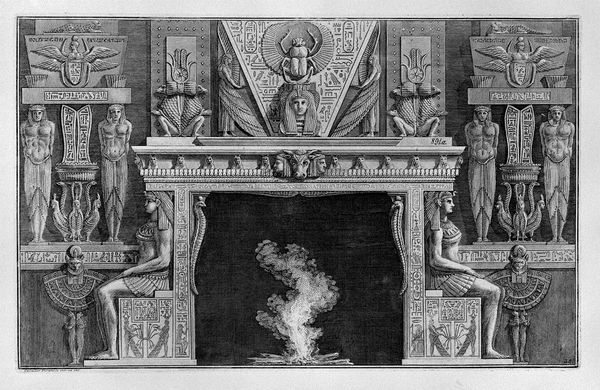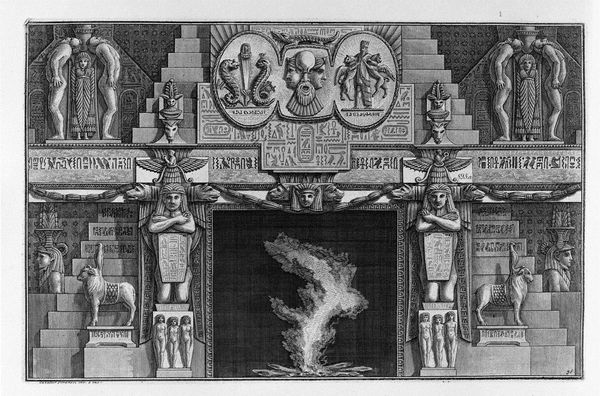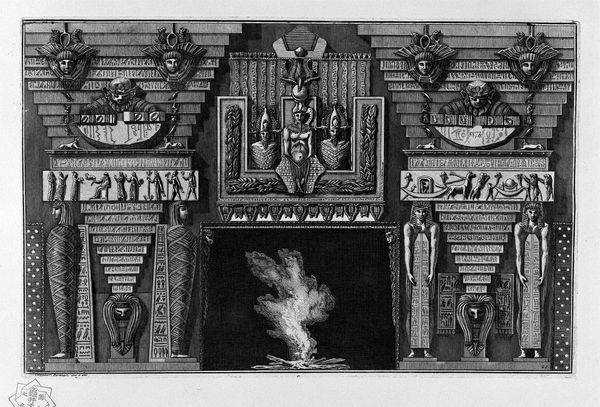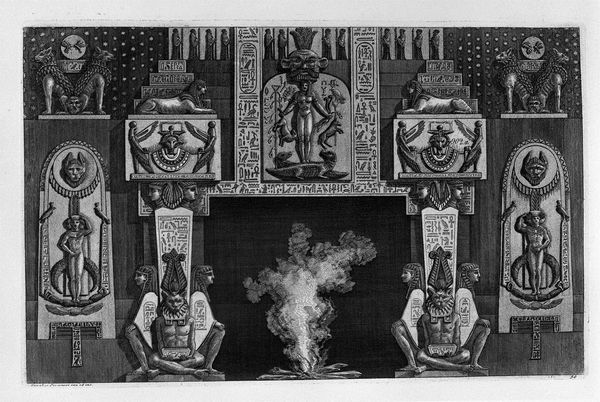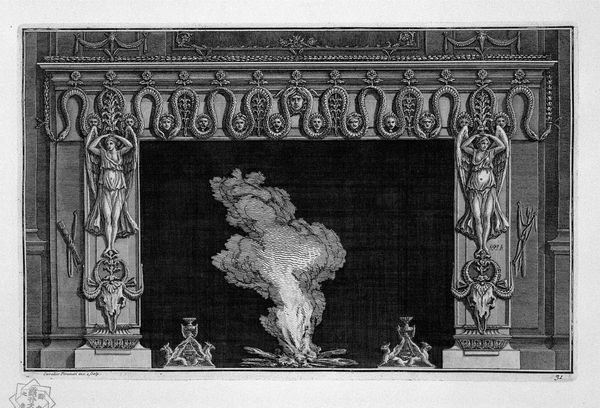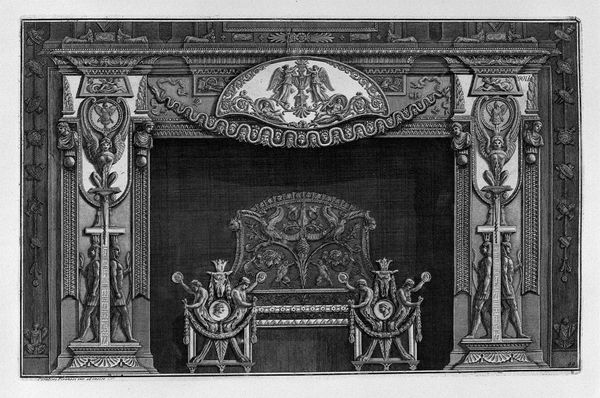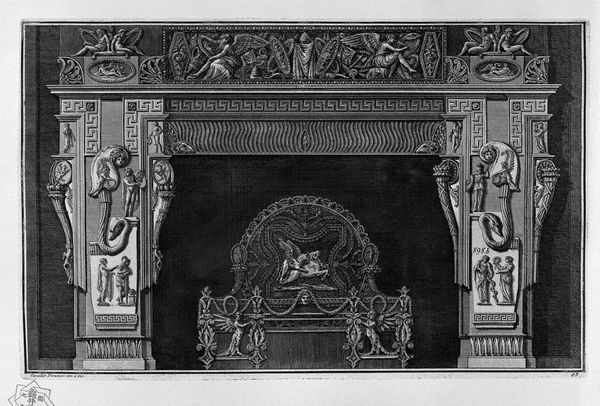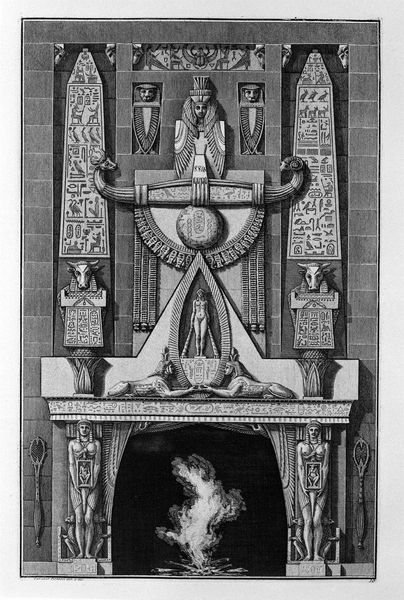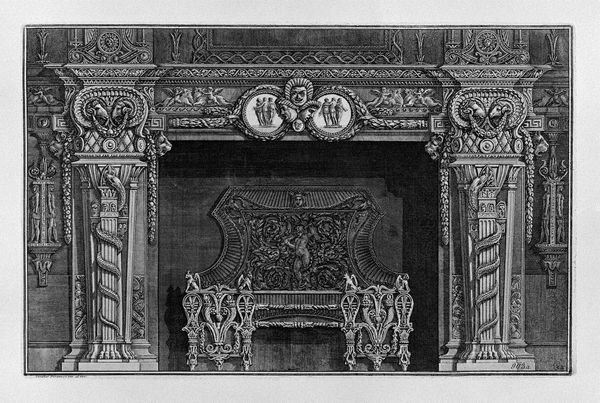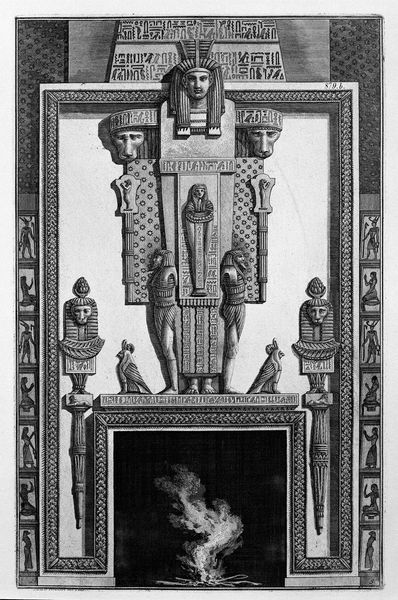
Egyptian-style fireplace, two large sides with figures supporting the top
0:00
0:00
drawing, print, engraving
#
portrait
#
drawing
#
neoclacissism
# print
#
complex detailed
#
landscape
#
ancient-egyptian-art
#
figuration
#
geometric
#
ancient-mediterranean
#
history-painting
#
engraving
Copyright: Public domain
Curator: This detailed print presents an Egyptian-style fireplace with figures supporting the top. The engraving is attributed to Giovanni Battista Piranesi. What strikes you most about its composition? Editor: It's fascinating—a marriage of cool classicism and exotic flair. The symmetry, the layering... it creates this really captivating tension between rigid order and extravagant detail. The monochromatic palette certainly contributes to this sense of duality. Curator: Absolutely. Piranesi, known for his etchings of Roman antiquities, was deeply interested in the appropriation and reinterpretation of historical styles. This print reveals a growing fascination with Egyptian aesthetics in Europe. Notice how the figures flanking the fireplace—are not just decorative—they represent labor and support. Editor: Precisely. I see it as a stage. The way Piranesi uses these vertical lines, the hieroglyphs acting as visual rhythm, directing our eyes. I'm intrigued by how the fire itself almost disrupts the stoic rigidity with its animated forms. Curator: Consider too the socio-political context. During this period, archaeological discoveries in Egypt fueled a widespread cultural phenomenon. This fireplace, albeit a design, speaks to a society that was actively consuming and re-imagining a distant past. It reflects both wonder and colonial dynamics. Editor: Good point. It definitely plays with the concept of authenticity versus representation. The fire is authentic, organic and the fireplace is geometric, symmetric, reproducible. This tension, for me, is very modern. It's also worth considering that such objects weren't accessible to everyone; they represent status, knowledge, wealth... Curator: Indeed, these historical appropriations were intrinsically tied to social status and power dynamics. Piranesi's design isn't just aesthetically compelling but historically revealing as well. The details of production and the cultural contexts provide deeper layers. Editor: Yes, I see now a tension not just in its form, but also in its very existence: the space it intended to inhabit and the ideas behind its fabrication. Curator: It really shows the convergence of labor, historical influence, and emerging design trends. Editor: An intriguing piece, to be sure! One that makes you think about history and form in a new light.
Comments
No comments
Be the first to comment and join the conversation on the ultimate creative platform.
